Resources for Seniors with Special Needs: Life After Illness, Disability, and Hearing Loss
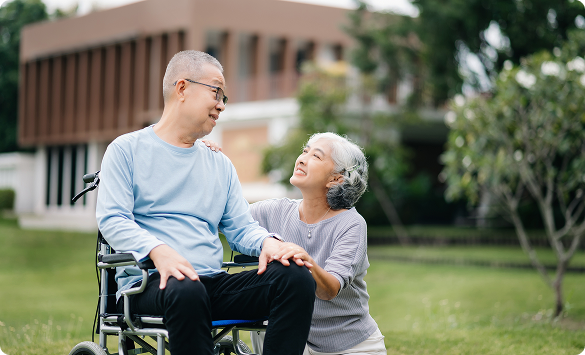
Getting older isn’t easy. Many seniors find themselves facing illnesses, disabilities, or the slow decline of hearing, vision, or memory. These shifts don’t just affect the person experiencing them. Life, in many ways, gets more complicated for families, friends, and caregivers as well. But complicated doesn’t have to mean hopeless.
The truth is, there are more resources available today than ever before. From home adaptations that make daily life safer to new technologies that restore independence, to financial aid that keeps the lights on, help is available.
In today’s world, there are a variety of tools at your disposal to help navigate the challenges of elder living—programs, support groups, and even smart gadgets that can make everyday life less complicated. This guide compiles some of the most reliable and trustworthy resources, whether you’re a senior yourself, a caregiver, or a loved one looking for practical information, support networks, and real-world tools.
Navigate this page
The Overlapping Challenges Seniors Face
Home Adaptations for Seniors with Special Needs
Assistive Technologies for Seniors with Disabilities
Financial Aid and Resources for Seniors with Special Needs
Emotional Wellness and Mental Health Support for Seniors
Community Support Networks for Seniors
Practical Resources for Caregivers of Seniors with Special Needs
Daily Communication Tips for Seniors with Hearing Loss
Home Safety Checklist After Illness or Disability
Additional Resources
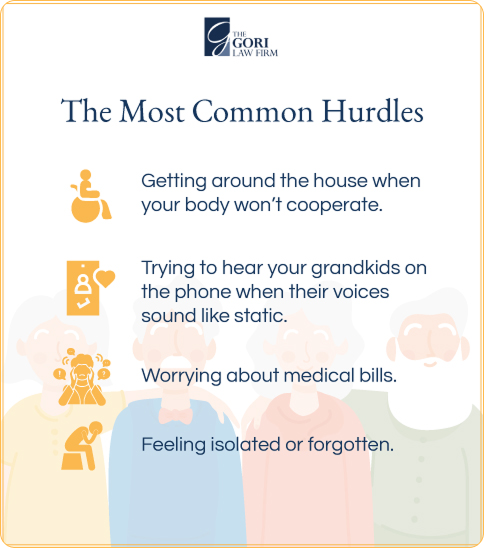
The Overlapping Challenges Seniors With Mesothelioma Face
Oftentimes, seniors aren’t dealing with a single issue. It’s usually two or three stacked on top of each other. A person might be living with the long-term effects of cancers, such as mesothelioma, while also dealing with hearing loss. Or they might be recovering from a stroke but also struggling with mobility issues and memory lapses.
These overlapping issues don’t just weigh on the individual. Caregivers (often family members) also carry the emotional and physical burden. Watching a parent lose mobility or independence can be heartbreaking. The late-night worries, the financial stress, the physical lifting and constant vigilance—it’s a lot.
The point here isn’t to dwell on the difficulties, but to recognize that seniors and their support systems often need layered solutions. A single resource isn’t enough; it takes a combination of medical, emotional, financial, and community support to create stability.
Some of the most common hurdles:
- Getting around the house when your body won’t cooperate.
- Trying to hear your grandkids on the phone when their voices sound like static.
- Worrying about medical bills.
- Feeling isolated or forgotten.
Understanding the nuances of these challenges is crucial for providing effective disability care.

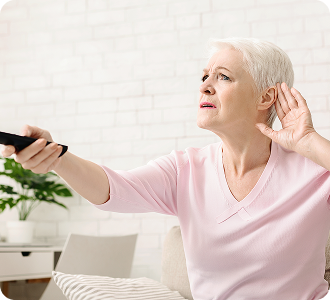
Home Adaptations for Seniors with Special Medical Needs
The home can become an obstacle course overnight for seniors living with disabilities. Stepping into an open shower or braving a flight of stairs can become significant hurdles to daily living.
Making the home safer doesn’t always mean tearing the place apart. Sometimes it’s as simple as adding better lighting so you don’t trip over the dog. Or tossing down non-slip mats. Or putting in a walk-in shower instead of climbing over a tub like it’s Mount Everest.
Common home adaptations include:
- Wheelchair ramps and stairlifts – to improve mobility between levels.
- Wider doorways – to accommodate walkers or wheelchairs.
- Bathroom modifications – grab bars, walk-in showers, raised toilet seats.
- Non-slip flooring – especially in kitchens and bathrooms, where falls are common.
- Better lighting – seniors with low vision benefit from brighter, glare-free light.
- Fall prevention tools – like railings in hallways, non-slip rugs, and accessible storage.
One practical tip to consider: think about the home from the perspective of safety and comfort, not just convenience. A night-light in the hallway, for instance, isn’t just nice. It might prevent a life-threatening fall.
For families worried about cost, there’s good news. Programs like the Aging and Disability Resource Connection (California example: aging.ca.gov) and national organizations, such as the National Council on Aging, offer guidance and sometimes financial assistance for home adaptations. Veterans may also qualify for grants through the VA for housing modifications.


Assistive Technologies for Seniors with Disabilities
Assistive technology has come a long way, and for seniors, these advancements aren’t just gadgets; they’re a means to independence. And when they work right? They can be a game-changer.
- Mobility Aids: from simple canes that fold up to fancy electric wheelchairs that can turn on a dime, these products are designed to help you stay safe and independent.
- Hearing Aids: sleek little hearing aids, captioned phones, even apps that turn speech into text in real-time, all to help you stay connected to the people who matter most.
- Vision tools: magnifiers, screen readers, and software that talks back when you type.
- Memory and reminders: medication dispensers with alarms that won’t let you forget. GPS trackers so family members don’t panic when someone goes out for a walk.
- Smart homes: “Hey Alexa, turn on the lights.” Done. “Hey Google, remind me to take my meds.” Ding.
The trick is finding what’s actually helpful instead of overwhelming. Nonprofits and advocacy groups often partner with tech companies to make these tools more affordable and easy to use. For example, organizations like AARP highlight senior-friendly technologies and provide guides on choosing the right product. Nonprofits like the National Council on Aging often review and suggest products, so you’re not just guessing in the dark.
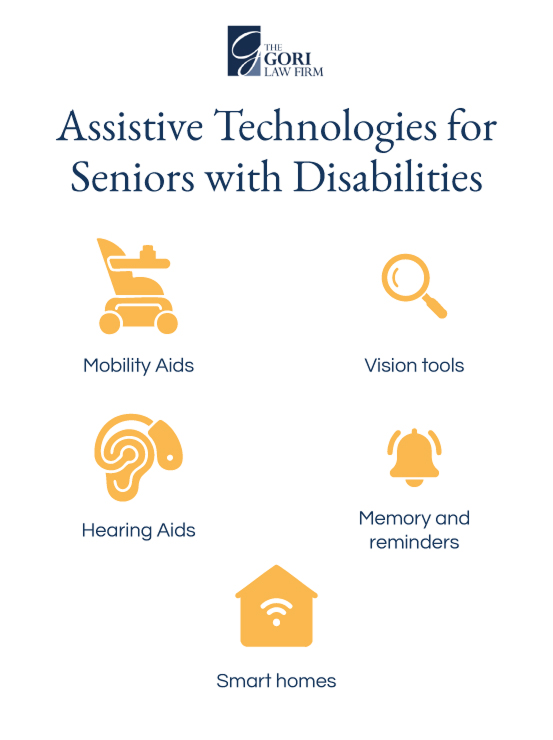
Financial Aid and Resources for Seniors with Special Needs
Limited incomes combined with rising medical expenses often make finances the biggest source of stress when caring for yourself or a loved one with special needs. Costs for prescriptions, home modifications, and new equipment can add up quickly, sometimes faster than expected. The good news is that a variety of programs are available to help ease the burden:
- Medicare: Covers hospital visits, outpatient care, and some medical equipment. It’s not perfect, but it’s the backbone for most seniors.
- Medicaid: For folks with limited income. It can help with long-term care, home services, and more.
- SSI and SSDI: If disability keeps you from working or if your income is below a certain line, these programs can send monthly financial support.
- Veterans’ programs: Grants for home changes, healthcare coverage, and sometimes direct cash support.
For veterans, the VA Aid and Attendance benefit can help cover the costs of in-home care, assisted living, or nursing homes.
Nonprofit organizations also step in where government benefits may fall short. Some charities provide grants for hearing aids, mobility equipment, or even home renovations. Local senior centers and Area Agencies on Aging are often the best starting points to learn about region-specific programs.
Applying for aid can be confusing, so don’t go it alone. The USA.gov Disability Services page offers step-by-step instructions and links to application forms.
Emotional Wellness and Mental Health Support for Seniors With Asbestos-Related Diseases
Physical health is only part of the story. The emotional impact of illness or disability can be just as tough. Sometimes tougher. Depression, anxiety, and loneliness are common among older adults, especially when mobility is limited or hearing loss creates isolation.
Mental health matters. Strategies that make a difference include:
- Therapy and counseling – many therapists specialize in geriatric mental health with a focus on helping patients cope with illness, depression, and anxiety due to isolation.
- Support Networks – both in-person and online groups for conditions like Alzheimer’s, cancer, or hearing loss.
- Mindfulness practices – meditation, yoga, or breathing exercises can help reduce stress.
- Staying active – gentle physical activity not only helps the body but also boosts mood.
- Hobbies – music, painting, and puzzles can help keep you feeling connected to yourself.
Resources such as the National Institute on Aging and AARP’s Caregiving Guide provide emotional wellness and caregiving support.
Sometimes, the most potent support is a simple human connection—sharing meals, making regular phone calls, or visiting the neighborhood can all help reduce feelings of isolation.
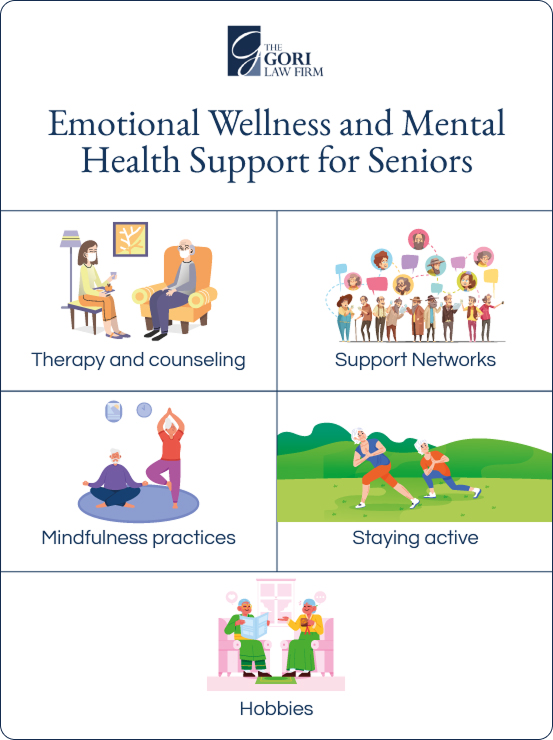
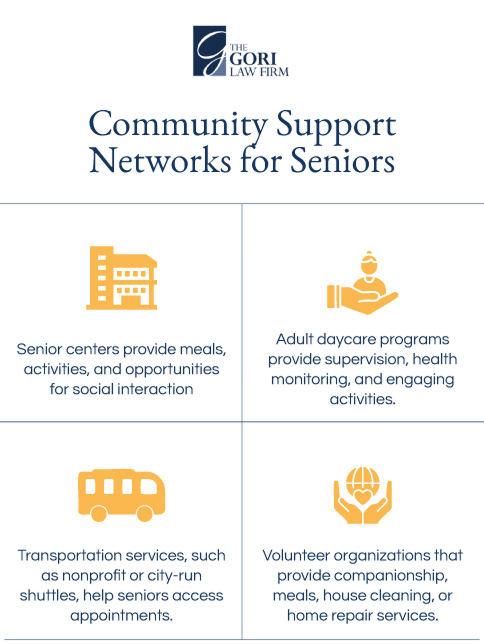
Community Support Networks for Seniors
No one should have to go through these challenges alone. Even the most independent folks need a circle. Strong community ties are vital for everyone, and especially for seniors living with disabilities. Support networks take many forms, and can range from family and friends to structured programs that provide daily assistance.
Examples of community support resources include:
- Senior centers provide meals, activities, and opportunities for social interaction.
- Adult daycare programs provide supervision, health monitoring, and engaging activities.
- Transportation services, such as nonprofit or city-run shuttles, help seniors access appointments.
- Volunteer organizations that provide companionship, meals, house cleaning, or home repair services.
Websites like seniorliving.org maintain directories of senior-focused services, while state-based networks, such as Aging and Disability Resource Connections, help connect families with local options.
Practical Resources for Caregivers of Seniors with Special Needs
When it comes to navigating and facilitating support for seniors, caregivers play a critical role. Often, they juggle medication schedules, doctor’s appointments, household chores, and emotional support, all while holding down other jobs and raising families of their own.
Here are some strategies to help alleviate some of the psychological toll:
- Stay organized. Use a calendar or calendar app to track your medications, appointments, and daily routines.
- Prioritize self-care. Remember, taking a break isn’t selfish. It’s necessary. If you’ve ever been on an airplane, the same principle applies: you must first put on your own oxygen mask before helping others.
- Educate yourself. AARP and NIA have guides that explain conditions in plain English.
- Find your people. Caregiver groups, online forums, or even just a neighbor who understands can make all the difference in getting through your day.
Burnout is real, and caregivers who manage to carve out space for themselves can actually care for others better in the long run. Just as the seniors they care for, caregivers also benefit from connecting with others in similar situations.


Daily Communication Tips for Seniors with Hearing Loss
Daily communication with loved ones helps maintain connections and foster a sense of community among seniors. That’s why hearing loss can be so devastating. It can create anxiety, depression, and ultimately lead to feelings of isolation. Effective communication strategies can make a huge difference. Some practical tips include:
- Look at speakers when they’re talking.
- Slow down, but don’t shout. Shouting usually distorts words.
- Write it down if you need to.
- Turn down background noise, such as TVs or radios.
- Embrace the tech: hearing aids, captioning apps, or even text messages.
Technology helps too. Captioning services are widely available on TVs, smartphones with speech-to-text apps, and amplified telephones. The National Institute on Deafness and Other Communication Disorders, along with organizations such as the Hearing Loss Association of America, provides resources for both seniors and their caregivers.
Home Safety Checklist After Illness or Disability
Home safety might sound minute compared to things like mobility aids or benefits programs, but it’s just as crucial a measure to take. A slight fall can change a life. Here’s a quick checklist families can use to evaluate home safety after an illness or disability:
Toss loose rugs or tape them down.
Install grab bars in bathrooms and, if necessary, in hallways.
Check smoke and carbon monoxide detectors.
Post emergency contacts by phone.
Use non-slip mats anywhere water lives.
Sturdy stair railings—wiggly ones are an accident waiting to happen.
Ensure hallways and stairwells are well-lit. Motion-sensor nightlights can be a lifesaver during midnight trips to the bathroom.
Arrange furniture so it’s easy to move around with a walker or wheelchair.
Caregivers can even print this checklist out and keep it handy. Many organizations, such as the National Council on Aging, offer free fall-prevention guides and home safety resources.
Additional Resources
- National Institute on Aging – Provides health information informed by research and reviewed by experts to help you learn about healthy aging and common health conditions in seniors.
- Aging and Disability Resource Connection – Administers local programs that serve older adults, adults with disabilities, family caregivers, and residents in long-term care facilities throughout the State.
- USA.gov: Disability Services – Offers information for individuals with disabilities and their families, including details on disability benefits available while working, caregiver compensation, and job opportunities.
- National Council on Aging – Provides information on fall prevention, nutrition, financial tips, benefits advice, and more.
- AARP Caregiving Resources – Offers practical tips and support for family caregivers, covering personal care, medical management, and financial guidance.
- SeniorLiving.org – Offers expert advice on everyday guides for seniors, from housing to expenses and healthcare.
Aging with illness, disability, or hearing loss is often challenging and complicated, but it’s not the end of the road. Adapting to this new way of life isn’t about getting back to who you used to be. It’s about finding a means to live fully, now.
Whether it’s as simple as installing a grab bar in the bathroom or as complex as Medicare benefits, with the right combination of assistive technologies, financial aid, emotional support, and community networks, seniors with disabilities can continue to live fulfilling and connected lives.

